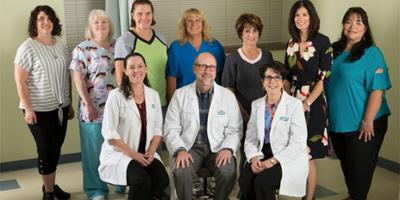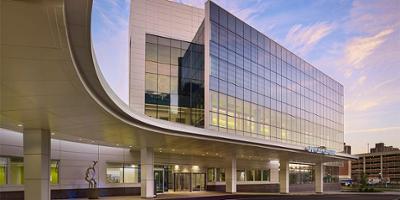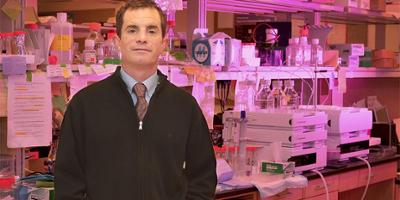Upstate opens new state-of-the-art simulation center to enhance patient safety and improve quality
Upstate Medical University has opened new $11 million teaching center that will simulate real-time responses to medical emergencies—in the ICU, labor and delivery, the operating room and in any setting where health care is delivered.
The aim of the Upstate Simulation Center is to improve patient safety and patient care, as well as build highly-trained multidisciplinary healthcare teams.
This new and sophisticated learning environment, totaling about 8,600 square feet will become a hub of teaching and training for students from all areas of the health professions. The center will also be dedicated to improving the competency of health care providers as well as training them in new techniques.
“The Upstate Simulation Center exemplifies our mission and vision to improve the health of our communities through education, biomedical research and health care and to create a healthier world for all,” said Interim President Mantosh Dewan, MD. “This special space provides Upstate with the ability to enhance the training of our students and our region’s health care professionals by addressing real-life patient care scenarios through advanced technology, while providing us with the ability to offer immediate feedback on how to best manage patient care scenarios that are faced every day.”
The center, which is located on the lower level of Weiskotten Hall, features a general open staging area to greet and host learners, a simulated operating room; six generously sized simulated acute care rooms with headwalls which can be “flexed” for additional configurations like Intensive Care Units or Outpatient rooms; two 16-person skills and task training rooms which can be de-partitioned to accommodate up to 32 learners; two debrief rooms which can accommodate a total of 32 learners; a haptics training room; dedicated administrative offices and workspaces to support the center; and the required storage area for all equipment and supplies. Additionally, there are four control rooms so that multiple rooms can used at once or in sequence as well as observational windows.
The patients in the Simulation Center are eight high-tech manikins that can be programmed to reflect a seemingly endless range of medical complications. They can have convulsions, breathing difficulties, pharyngeal swelling, cardiac issues or another warning sign or symptom that learners might face in a real patient. An expectant mother manikin can exhibit difficulties during delivery. Rounding out the family of manikins are a baby and child.
“These manikins are about as life-like as one can get,” said Erin Graham, CHSE, manager of simulation services. “They allow us to set specific scenarios, while providing for the safest training of learners.”
The Simulation Center’s high-tech training components features almost every body part, such as foot, ankle, hand and wrist to practice soft tissue injection and other skills. A special cardiology patient simulator can be programmed to mimic 88 cases of heart disease, with cardiac sounds recorded from real patients.
“Simulation has been used in aviation for many years, and has now been fully embraced in the education of doctors, nurses and many other health care professionals,” said Lynn Cleary, MD, vice president for academic affairs. “It is known to improve clinical competence of trainees and has been shown to improve patient care outcomes as well.”
Scenarios may also incorporate roles played by spiritual care, pharmacy and social work.
“The skills that will be examined and taught here won’t simply be limited to the practice of intubation or other invasive procedures,” said Director of Interprofessional Education and University Simulation Darren Carboni, MBA, CAS-HSMP, “We’ll address things that actually happen in the patient room, such as visit from a case worker or from a clergy member.
“It’s an opportunity to hone not only our technical skills, but interpersonal communications and our multidisciplinary team approach to care,” he said. “This will be a space that we incorporate all that can happen in real life.”
Students from nearly every program at Upstate will find some benefit in spending time in the Simulation Center. Faculty, too, not only as teachers, but as learners will have opportunities to enhance skills or review training protocols.
“It’s a learning center for everyone,” Carboni said.
Even health professionals and learners from throughout the region will be able to take advantage of the Upstate Simulation Center. Carboni said opportunities are limitless for regional partners. For example, a small regional hospital may use the space for training on new procedures, or perhaps to address new protocols for a small hospital emergency room.
“We will have the ability to tailor scenarios to address a particular issue or event for learners from throughout the region,” he said.
The Upstate Simulation Center is part of a coordinated network of simulation resources that, together, provide realistic intra- and inter-professional experiential learning at Upstate. The center complements Upstate’s Clinical Skills Center, that features 22 exam rooms, closed-circuit monitoring, and state-of-the-art medical equipment. In this space students shape their “bedside manner” and clinical skills with standardized patients or actors role-playing as patients.
Funding for the Upstate Simulation Center was provided by a SUNY 2020 Challenge Grant.
Architect on the project was SLAM; general contractor was Murnane Building Contractors.





